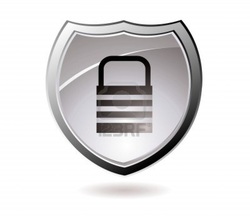 With the available choices on the placement information systems in organization, it would just boil down to the willingness and ability of the organization to allocate resources on the matter. Time, money, people, and efforts are all at stake in this matter.
It is up for the organization to plan cautiously the creation and development of their information system. While it is ideal that from the start system engineering be in place, it also entails high expenditure. And with the presence of pre-packaged systems, it is hard to weigh the options especially that these pre-made systems have advantages of their own like being made by certain vendors specializing in making systems in different fields like Oracle, IBM, and others. The problem posed by patronizing the pre-packaged systems is vendor-dependence. And when different vendors of systems are incorporated in ones organization, consolidation and merging of all these systems will be difficult – as what most companies nowadays are experiencing.
Of course, the organization wants what is best for it and therefore would exert all necessary measure to invest on what it deemed necessary- and in reality, information system is not that given much priority as to this.
Information is vulnerable in every way no matter where you look at it. There will always be a loophole or more on the security and safety of information. What organizations can do is to increase safeguards – human and technical. Human safeguards are, by the lines, measures of training and preparing people in different situations to protect information. Directly, endusers are the ones involved – may they be frontliners, managers or even executives. As counterpart of the human measures, there are also technical measures to ensure the safety and security of information. From the basic passwords and individual authority limits to as complex are firewalls and virus protection applications. When both these human and technical measures are in place, it is less likely that the information system in ones organization is at risk.
 In the Philippines, there is a weak law, or rather none, regarding security and safety of information in the internet. In some countries like the USA, there are laws protecting information on the internet. They can even trace and act upon internet piracy such as torrents.
The problem with information security for us is that there are still less people in our country who are skilled enough so as to secure information. Just look how individual hackers infiltrate government sites and other sites. This proves how weak our safety and security is. Well that seemed to be a hash conclusion but it is. Data and information are somehow intangible assets that can only be contained and not fully substantiated. This is the problem why there are many threats to information security.
First, being open to the Pangaea of the virtual realm, there are threats to attacks of viruses, spywares and malwares. Second, being technically “open for all”, ownership and rights issues are at stake. Third, being vulnerable to hacks and alteration, safety and security is jeopardized.
The digital era of course do not let these threats get to its downfall, all these have temporary to permanent solutions. Tools such as antivirus applications and other protection programs have been created and are continually being updated of the definitions of current viruses, malwares and spywares. As for the ownership and rights issues, this matter has been addressed temporarily. There are some sites that restrict lifting from their site but as to a solid law and technology on how to trace ownership, there is a weak development. And as for the third, since people are the ones who created and developed these information systems, there are always ways that people can also break into these systems.
 Knowledge management system is higher level information system that uses information from lower level information system to be able to create a somewhat like a forecast of pattern or behavior. It studies and analyzes matching tastes and preferences, likes and predilections.
In social networks, you may have not noticed but the ads situated on ones page is based on his demographics and likes. For example, one located in the Philippines who enters www.yahoo.com will be redirected to www.yahoo.com.ph which contains ads that are from or can be located in the Philippines. And in the social network sites, notice the sidebar ads, they are based on ones age, likes, and locale. This is a simple work of knowledge management. Also falling under knowledge management is the predictive and prescriptive semantics. In comparison, sales can provide results of buying patterns such as lean months, demographics of customers, repeat customers, frequent returns or defects, and others.
Knowledge management proves to be a cornerstone in emerging business strategies with companies increasingly turning to software vendors to enhance their efficiency in industries.
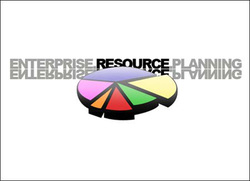 May it be a micro-scale of large-scale business, all need information system management. May it be a simple Microsoft Excel inventory or a vendor made payroll system.
Truth be told, Enterprise Information System is not fully implemented by most organizations using it. Three components of EIS: Enterprise Resource Planning, Supply Chain Management, and Customer Relations Management. Either two of these components are only used or only one. These three components promises to make entrepreneurs and companies achieve their growth. And like all other information systems, the EIS is not exempted from the high cost it reckoned. Rigorous time in planning is also needed to be able to implement EIS. This system involves three layers of data sources, the customers, the suppliers, and the data within the organization also.
Backtracking the previous topics, this system is vital in the strategic placement for organizations gearing towards their competitive edge. And also like any other systems, there are setbacks and downfalls of this system. One is cost, obviously. Second is training and turnover. Enduser should know how to use it, and with updates and upgrades, continuing education and training is needed also. Third is user-dependent. This is somehow related to the previous item. No matter how good the system is, it is fully dependent on the users.
Looking at the brighter side, EIS also has lots of advantages like ease in business transactions and processes. Another one is that it helps provide timely delivery of information and reports. Information is in order and easier to be understood for further analysis. With this, management and executives can precisely make decisions.
Weighing the two sides of the coin and with the willingness and ability, it is still better to venture in investing resources to Enterprise Information System. Again, to put the organization in a competitive edge.
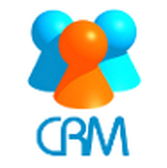 Some organizations tend to forget a very important factor in putting up together an effective information system that is the customer relationship management system. This CRM system is important because customers are the sources of one of the sources of data. With this system, data about customer are organized, tracked and automated for the organizations key aspects such as sales. This would build profiles of the customers segments and patronizing pattern resulting to forecasts. This would also include keep records for after sales support such as returned products and repairs. The CRM system would also point out loyal customers. On the side of the organization, support staff of the purchase, for example, would be traced and would indicate to whom customer count will be credited to – this is for companies who involve customer service count for their performance evaluation and incentives. This system is only a part and parcel of a package of systems that would make an organization achieve its goals and objectives.
Going back to basics, the choice of CRM systems depend on the nature and size of the organization or company. Same facts to follow, pre-made systems are less expensive than custom-made systems but lesser control and personalization. Making the right choice of a suitable CRM system, together with the other systems, ones organization will be able to happily serve their delighted clientele.
 In today’s busy world, multitasking becomes a normal habit. People engage themselves in different tasks and errands – domestic responsibilities, work, socials, and more work. More and more people feel the need for continuing education even with their present undertakings. This concern is addressed by e-learning, distance learning, and telecommuting.
E-learning gives opportunities for students to engage in their usual undertakings and just require them to meet at least once in the school probably for examination or graduation. This is basically learning via the internet. A usual classroom setup can engage in e-learning. This supports conventional teaching methods. Another concept of e-learning is with the presence of a virtual classroom, students learn via the internet may it be by web conference or video conferences. As with distance learning, the idea here is a student is enrolled but cannot all the time be present in school premises. The early answer given by distance learning is the sending off of learning materials such as AV materials as part of their modules. This method evolved to just using the internet to communicate and exchange notes and files. Although there are many ways of doing distance learning, it may, at least once, or may not even require the presence of the student to school.
In both cases, web-enabled systems make knowledge accessible to those who need it, when they need it, any time, anywhere. E-learning and distance learning can be useful both as an environment for facilitating learning at schools and as an environment for efficient and effective corporate training.
Telecommuting is the answer for people who would want to work but have geographical constraints. This answers a big portion of unemployment in which our country now strongly ventures into business process outsourcing otherwise known as “offshore”. With telecommuting, people work together (not physically) via a virtual workplace. They meet and perform their own duties as a normal workplace runs, just which, they are not really there; they are far from each others, even oceans apart.
 The most effective solution aiding globalization is the internet. Every second counts. This is very true. That is the pace of changes happening on the internet. It is a tool that brings nations together – crosses physical and geographical boundaries. With internet, costs of companies have been cut saving millions and even billions of transportation and communication costs. Information, for one, is sent back and forth. This is one tool that addressed the problem of distant communication.
As presented, it serves three purposes: discover, communicate, and collaborate. These three can work hand in hand and is vastly well served by the internet. Discovery aims to let user of the internet to search or learn and research or relearn data and information coming from different sources like websites. Communication is one noteworthy purpose of the internet bridging countries. With various tools like chat, messaging, mailing, and even calling, communication has been easy and constant with the help of internet. The other purpose of internet, collaboration, is simply for the purpose of two or more people working together to aim a particular goal or goals. With the discussed collaboration enabling tools like teleconferencing, video conferencing, web conferencing, whiteboards, screen sharing, and all others, work seem to be boundless and fast. With these tools, brainstorming, meetings, and decision making has been easy and speedy.
The downfall of the existence of internet I believe is based on the enduser. It is up to the utilization of the one using the internet will such downfall or disadvantage be present. Viruses, bugs, cyber crime, and others, are all acts of man and thus naturally, internet itself is not bad.
In addition to internet, other infrastructures of network computing are intranet and extranet. Intranet is very useful in organizations. With the confinement of intranet, data and information security is at place. This also supports internal collaboration such as emails and voice-over-internet-protocol (VoIP). Extranet is a network of two or more intranets connected. This can best serve organizations with significant partnership and cooperation with other organizations.
The presence of these tools supports groupwork and collaboration within and among organizations. This is for their respective advantages, supplementing each others edges.
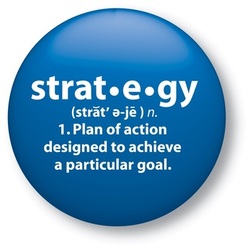 All organizations, well mostly, aim to best serve purpose may it be un production or service. This may well be expressed through their commitment towards development and innovation. With the help of information systems, organization can keep up with the fast-paced changing society. Organizations can reach out to their suppliers and customers with ease and promptness, as well as in the organization itself, communication can be made possible even continents apart.
In todays competition, the vital weapon is data, which is already there. It is just up to who reaches, gathers, analyzes and makes use of the data that can lead and capture the market. Today, it is not just who is on the top, it is now more on how long can the leader maintain its spot. Today, it is not just who has been serving the market long enough but who can keep up with the society’s tastes and preference. The one who continues to amaze the market will gain the competitive edge among the industry. One example of a Filipino company that continues to amaze the market is the San Miguel Corporation, with their vast products and ventures; they continually innovate and develop products and services. They continue to learn from their customers and then use that learning to be able to well serve their clientele.
These strategies may seem very obvious and common knowledge but in practice, they are the hardest practice since one does not only concern a single person, it concerns groups of people, inside and outside the organization. It involves also other organizations that have different goals and objectives as well as having their own strategies. With this idea, competition is head on and no room for slacking off. That is the idea of utilizing these strategies; leading and not just keeping up with the competition.
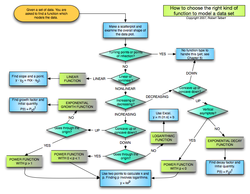 Given the exercise(s) about the previous topic “Data Modeling”, it was easy to somehow understand as a concept but when the actual problem was to translate the narrative case to a data model, that was when the confusions started. Maybe because basically I personally had just an ample of knowledge about the topic. But it was worth trying even though the trials were all wrong.
Knowing the need for this data model in the conceptualization of information system needed for an organization, it was worth the errors. It is in making mistakes where we learn, although the hard way.
One important lesson in creating data models, on creating drafts or trials, always use pencil. You’ll never know where and when you will be ‘out of the line’. After the data model is acceptable, translate the draft via Visio, it is very helpful having all the shapes for the entities and all. True, technology can ease the efforts in laying out the data model into organized output but the conceptualization and analysis are all based on the human effort which is crucial because this would identify the basis for the information system. Knowing this, it is important to put the right persons on the job.
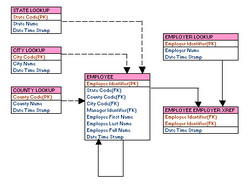 The topic is somehow a nucleus of how an information system is designed. With tracing data modeling, entities are identified and the relationship between entities, processes and the interaction between them are identified.
Although I know there is a lot more to this topic than what we have discussed, the simple or should I say basic relationships were given namely association, aggregation, composition and generalization. I will give brief notes on what they are. Association is simply, with the key word associate, when entities are related and identified as the other. In aggregation, the entities are connected and related but one is independently connected from the other – that is, one can exist without the other. In composition, the relationship is like a part as opposed to whole. The part is basically dependent on the whole. And in generalization, this is like passing a characteristic or trait from generation to another. The child class inherits a similar trait from the parent or the super class.
Given these concepts on data modeling, a simple design for an information system can be made and from there, development and engineering can start. This way, breaking down to identifying the entities involved and the processes needed, it sure will be able to be custom-made for the organization being now “fit” and personalized and the desired results will be acquired.
|










 RSS Feed
RSS Feed